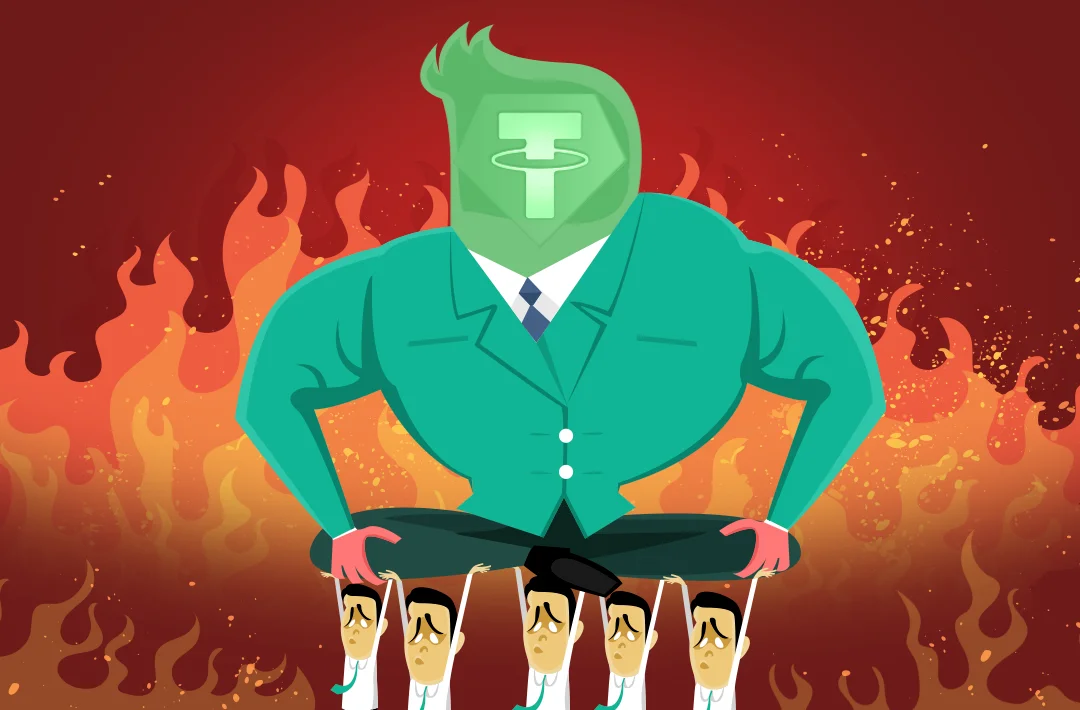В Deutsche Bank заявили о рисках монополии Tether на рынке стейблкоинов
Эмитент USDT в ответ заявил, что в отчете не хватает данных в поддержку таких утверждений

10.05.2024 - 09:40
929
6 мин
0
Что произошло? В Deutsche Bank заявили, что большинство стейблкоинов обречены на утрату привязки к фитаным валютам. Такой вывод аналитики сделали путем экстраполяции данных об изменениях курсов 334 фиатных валют за последние более чем 200 лет на рынок стабильных монет. Из изучаемых валют успешно сохранились лишь 14%, и только благодаря тому, что они пользовались доверием, были обеспечены резервами и функционировали в жестко контролируемых системах. Эксперты подчеркнули, что этих факторов не хватает многим крупным стейблкоинам.
Что еще известно? В банке объяснили, что решили сравнить стейблкоины с фиатом из-за их сходств: оба типа активов требуют достаточных резервов и уверенности в надежности эмитентов, а также подвержены спекулятивным влияниям. Кроме того, большинство стейблкоинов и фиатных валют зависят от доллара США или отслеживают его.
Вместе с тем аналитики напомнили, что фиат и стейблкоины служат разным целям: первые применяются правительством для поддержания экономики страны, вторые — частными компаниями для получения прибыли по всему миру.
Стабильные монеты, привязанные в соотношении 1:1 к фиатным валютам (как правило, к доллару США), являются основным каналом для торговли криптовалютой, служа в качестве убежища от высокой волатильности рынка цифровых активов. Крупнейшим стейблкоином является USDT от компании Tether с капитализацией свыше 110,86 млрд долларов.
Хотя с начала года его доля рынка упала на 13%, она все еще составляет внушительные 69%, а по суточному объему торгов на момент написания статьи USDT обгоняет биткоин на 13 млрд долларов.

Kaiko: Доля USDT на централизованных биржах упала на 13% с начала года
Аналитики связывают это с ростом конкуренции
Аналитики заявили, что монополия Tether на непрозрачном и спекулятивном рынке стейблкоинов может иметь серьезные последствия. Они напомнили, что ранее компания была оштрафована Комиссией США по торговле товарными фьючерсами (CFTC) за предоставления неточных данных о резервах. Они также указали на зависимость рынка деривативов от USDT, которая в случае утраты привязки может увеличить убытки и сорвать сделки с привлечением заемных средств.

Tether начнет мониторить вторичный рынок USDT для предотвращения незаконных транзакций
Мониторинг будет осуществляться с помощью инструмента компании Chainalysis
Tether начала публиковать ежеквартальные отчеты о своих резервах с момента заключения соглашений с CFTC и властями штата Нью-Йорк в октябре 2021 года, компания выплатила штраф на 41 млн долларов в рамках урегулирования.
Tether прокомментировала отчет Deutsche Bank, заявив, что в нем не хватает ясности и существенных доказательств. «Отчет основан на расплывчатых утверждениях, а не на тщательном анализе. Несмотря на то, что он пытается спрогнозировать падение стабильных монет, он не может предоставить конкретные данные в поддержку своих утверждений», — подчеркнули представители Tether.
Ранее Tether по итогам I квартала отчиталась о рекордной чистой прибыли в 4,52 млрд долларов.
Полезный материал?
Тренды
По состоянию на 21 января капитализация этого сектора крипторынка превышает 519 млрд долларов
21 янв. 2025 г.
Рынки
Выручка платформы за то же время составила 9,5 млн долларов
20 янв. 2025 г.
Рынки
Паи Траста предназначены для отслеживания рыночной цены XRP за вычетом комиссий и расходов
17 янв. 2025 г.
Рынки
Актив позволит беспрепятственно перемещать USDT между различными блокчейнами
17 янв. 2025 г.
Рынки
Ранее сообщество раскритиковало проект за отсутствие прозрачности, что привело к резкому падению курса токена HYPE
8 янв. 2025 г.
Рынки
Рост доходности казначейских облигаций США негативно сказывается на рисковых активах
8 янв. 2025 г.








